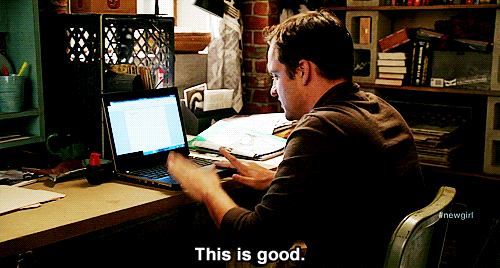In class today, we highlighted the three main elements this first essay should feature: argument, motive, and analysis.
Since we’re not meeting in person on Friday, we’re going to use this opportunity to look at a few smaller issues. We’ll subject your revised (or being revised) draft to a few tests to see if it’s ready for submission. Obviously, you’ll have more time to revise (the revision is due on 10/1), but think of this as a way of seeing what might be left to think about. It would be wise to complete this assignment after you’ve already done some preliminary revising, especially if you have work to do on your argument.

You, revising your essay
I’m going to ask to you go through a series of tasks with your most recent draft. When you’re done, email me a copy of that messy, marked-up draft as proof that you completed the assignment. (You don’t have to have made all of the revisions these exercises will point out, but you still need to have completed the diagnostic steps below.) In the body of the email, reflect a bit on what aspects of this revision were most revealing about your particular draft. (This will count as attendance and participation for 9/25.) Do this by Sunday evening (9/27). If you run into any problems, send me an email and ask for help.
- EVIDENCE: Open your most recent draft in the Word processor of your choice. Using the highlight tool, highlight all of the quoted evidence you use in the essay. Look over the essay and think about the amount of quoted evidence you use. Do any claims seem unsupported? Are there too many big chunks of quoted evidence in a single paragraph? Check whether, as we discussed in class, you lead into those quotations with sufficient context and then use the space after them for explanation and analysis. Also take this time to check that you’re quoting accurately.
- TRANSITIONS AND TOPIC SENTENCES: With a different color of the highlighter tool, highlight the first sentence of each of your body paragraphs. Does that first sentence help your reader understand what that paragraph will do? (Can you tell what the task of that paragraph is?) This is also a good time to check the whether any paragraphs need to be broken up (because they’re trying to do too much) and whether they’re in a logical order. Can you trace the logic of your argument by reading just those topic sentences? (This is your goal.)
- TITLE AND HOOK: Check the title of your essay. Does it preview your argument (and not just the broader topic or the assignment)? Look at the very first sentence of the essay. Does it attempt to grab or excite your reader? Is it a sentence you would like to read?
- COPY EDITING: With a different color of highlighter, highlight every proper name in the essay (including titles and character names). Are those names spelled correctly? Now read through and identify any grammatical or punctuation mistakes that you know you make repeatedly (missing apostrophes for possession? run-on sentences? problems with subject/verb agreement? something else?). Make a list of these at the bottom of the document and make time to proofread for them before submitting the final version next Thursday.
- PLAGIARISM: Finally, go here to complete Baruch’s plagiarism tutorial, just to make sure that you’re clear on matters of academic integrity. If you have questions after completing the tutorial, just drop me a line. Before you submit the revision, make sure to add a works cited list at the end of your paper. (See the last page of the syllabus for formatting.) [Edit: when you go through the tutorial, check out the examples by clicking at the bottom of each slide. While the last slide will tell you to complete a tutorial on Blackboard, it looks like this is no longer working, so don’t worry about that step.]
Don’t forget to read the “Writing about Film” handout for Tuesday!


